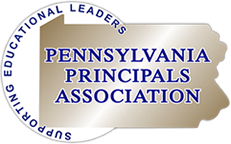State Board of Education Adopts Cut Scores for Keystone Exams
July 26, 2011
To raise the academic bar and ensure students achieve future success, the State Board of Education adopted cut scores [on July 20, 2011] for the Keystone Exams, which are designed to increase academic rigor for students across Pennsylvania, said Secretary of Education Ron Tomalis.
“After speaking with business leaders, college presidents and workforce development organizations, it has become apparent that Pennsylvania’s students are not adequately prepared for the demands and expectations of the 21st century global economy,” Tomalis said.
“Today’s youth are not just competing with their peers at the national level; they are also competing internationally for both academic excellence and employment opportunities. When challenged, Pennsylvania’s students can and will achieve academic excellence. We owe them a world-class education, which will provide them with opportunities to be successful in any future path they choose,” Tomalis said.
The board adopted the scores, which range from 1200 to 1800, for the Algebra I, Biology and Literature exams. The scores were distributed among performance levels as follows:
Algebra I
- Below Basic – 1200 to 1438
- Basic – 1439 to 1499
- Proficient – 1500 to 1545
- Advanced – 1546 to 1800
Biology
- Below Basic – 1200 to 1259
- Basic – 1460 to 1499
- Proficient – 1500 to 1548
- Advanced – 1549 to 1800
Literature
- Below Basic – 1200 to 1443
- Basic – 1444 to 1499
- Proficient – 1500 to 1583
- Advanced – 1584 to 1800
This past spring, more than 94,000 students completed the Algebra I Exam, 46,000 completed the Biology Exam and 42,000 completed the Literature Exam statewide. Based upon the scores adopted by the board, of the students tested in Algebra I, 39 percent scored proficient or advanced; in Biology, 36 percent scored proficient or advanced; and in Literature, 50 percent scored proficient or advanced.
When the overall scores of the Keystone Exams are compared to the 2010 Pennsylvania System of School Assessment (PSSA) results, Tomalis noted, the rigor of the Keystone Exams were clearly evident. Statewide, 73.5 percent of students scored proficient or advanced on the PSSA while 41.8 percent of students who completed a Keystone Exam scored proficient or advanced. For comparison purposes, 40 percent of Pennsylvania’s eighth-grade students scored proficient or advanced in both math and reading on the National Assessment of Education Progress.
“These results indicate the stark contrast between what students need to know for post-secondary success versus what is actually being taught in the classroom,”Tomalis said.
The Keystone Exams’ cut scores were the result of lengthy review and discussion among a panel of diverse individuals who represented education professionals from secondary and post-secondary entities. These experts were chosen for their unique perspective and understanding for the need to increasingly challenge high school students in order to meet the demands of the post high school experience.
“These are exciting times in education,” State Board of Education Chairman Larry Wittig said. “The Keystone Exams will ensure continuity throughout the state for end-of-course exams. These cut scores are rigorous and reflect a high level of expectation for our students.”?
In 2009, the State Board of Education set new high school graduation requirements that can be met through a combination of several options, one of which is successful course completion with a Keystone Exam as the final exam. School districts that chose to use the Keystone Exams must require all of their students to participate beginning with the graduating class of 2015.
The Keystone Exams are end-of-course assessments designed to evaluate proficiency in Algebra I, Algebra II, Biology, Chemistry, Civics and Government, English Composition, Geometry, Literature, U.S. History and World History. These exams will help school districts guide students toward meeting state standards, which are aligned with the expectations for success in college and the workplace.
